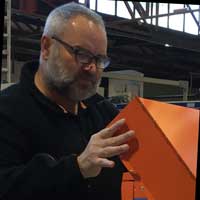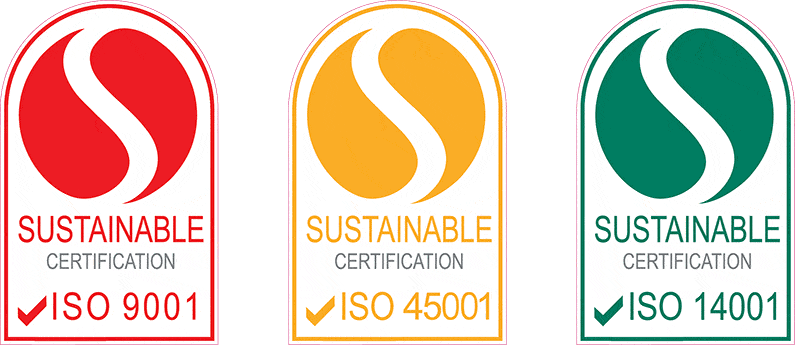
John Rakic
John Rakic is the proud Owner and Managing Director of Trafalgar Group with over 20 years of experience in the passive fire industry.
NCC2022 is all but here; do you know what all the fuss is about and what other NCC changes have been implemented pertaining to FRL’s?
This article is a MUST read for all those participating in passive fire protection in Australia; whether you are a developer, builder, project manager, contract administrator, services engineer, strata manager, architect, designer, fire protection consultant, manufacturer or suppliers of fire stopping materials, a regulator, a building surveyor, certifier or the like.
It discusses the changing landscape of passive fire protection driven by recent and proposed changes to the NCC, coupled with the pro-active approach taken by leading construction companies because they were quite frankly fed up with the expensive mess they were continually having to clean up pertaining to protection of openings in as built buildings.
It sets out the challenges for the so-called Passive Industry sector; that is for manufacturers and suppliers, resellers of products, designers, installers, certifiers and those doing inspection and testing of existing buildings. As Trafalgar, my company, we have got onto the front foot, to respond positively to the challenges right here and now, and the ones we see ahead, but sadly, many manufacturers, suppliers and even installers are stuck in the past, (in the old way of doing things) and I can see a very hard time ahead for them, if they do not get very busy, very quickly. For many it will be a rude awakening and both an expensive and possibly company destroying experience. Watch this space!
This is just a snippet of the full article. To read the entire article, download the pdf today.
Table of Contents
A Quick Overview of Passive Fire Protection
Passive Fire Protection involves dividing buildings or parts of building into fire containment zones, whereby if a fire starts in one zone, the fire compartment barriers, are designed, built (and hopefully maintained) to stop the fire spreading from one zone to another.
So called fire rated walls, floors, ceilings, shafts and the like , and all the openings like doors, windows, and those for services which pass through these fire barriers, need to be fire tested and have suitable fire testing documentary evidence to prove they can provide a requisite FRL (or FRR for my Kiwi friends).
Passive Fire Protection isn’t the hardest fire protection subject area to grasp, but somehow at least here in Australia, just like waterproofing for example, we seem to make a big mess of it too often.
How was Passive Fire Protection in the 1990’s?
want to start by discussing how it was, so I can articulate to readers how it is today, of course where I see it going and why. Sorry for the run, down memory lane but it is fun to reminisce at times!
James Hardie
My first exposure to Passive Fire Protection was as part of my role at James Hardie as a much younger Engineer. James Hardie in the late 1980’s had created an R&D joint venture with a UK company called Cape; together they worked on asbestos free building board technology which saw the introduction of wood pulp, or cellulose as the backbone of both fibre cement and calcium silicate board technologies. I worked on the development of some fire rated duct systems, using a product we were making at James Hardie called HardieTherm700, and I was involved in some sliding fire door fire tests with same product.
We had not long had the first Building Code of Australia published, which I had purchased and studied, and I had my own copy of AS1530 Part 4 which I had read from front to back, several times.
I remember driving over to North Ryde to the Experimental Building Station, having completed a Sponsored Investigation agreement, getting a fire test completed and receiving my first fire test report, SI 0075 or a number something like this.
To me, as an Engineer it seemed to make sense. The Regulations, in each State & Territory, had adopted the BCA1990 as its technical provisions for construction of buildings. There were many so called primary and secondary referenced Australian Standards, which formed part of the BCA’s technical provisions.
In terms of building control, it was explained to me, by an old James Hardie fellow employee, that the Council and their Building Surveyors acted as the Building Control Police to make sure builders and subcontractors did the right things; well at least in terms of Passive Fire Protection. I also remember being told that the Fire Brigade did some inspections too.
Tyco/Wormald
A few years later, I found myself at Tyco Building Products, which was the new name for an old and well known, market leading division of Wormald, called Wormald Building Products. Here I got a baptism of fire pardon the pun, I had to do fire testing of both fire doors and openings for service penetrations. Not long after having completed by MBA, I became the Commercial Manager for Passive Fire Protection.
It was here that I learnt my first regulatory enforcement or lack of regulatory enforcement lesson pertaining to passive fire protection.
The old BCA, called up an FRL, based on fire testing to AS1530 Part 4, which for service penetrations included both the integrity and insulation (temperature rise on non-fire side) criteria. I knew we had achieved both integrity and insulation, the latter by use of steel mesh systems known as FyreGUARDS, InsulGUARDS and FyreSPRINGS. No one was putting them on, and no one, that is no council seemed to care?
We fielded so many technical questions about service penetrations for cables and pipes in those early days, and it was apparent that it was impossible to fire test every configuration, and this saw the development and publication of AS4072.1 – 1992, which in retrospect was ahead of its time globally. It documented some STANDARD cable and pipe configuration, which if fire tested with a specific fire stopping material(s), provided a so-called field of application, to simplify the fire testing and certification process.
At this time also, I drew the short straw, and was asked and agreed to start my Masters in Fire Safety Engineering. I wasn’t even sure why, but my senior management said we needed to have someone doing it to understand what it is and how it might impact the fire protection industry.


